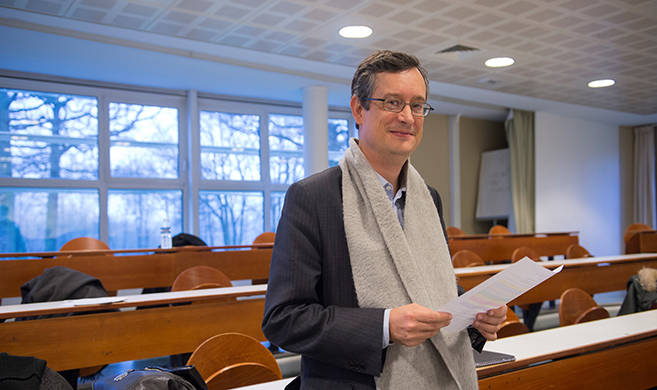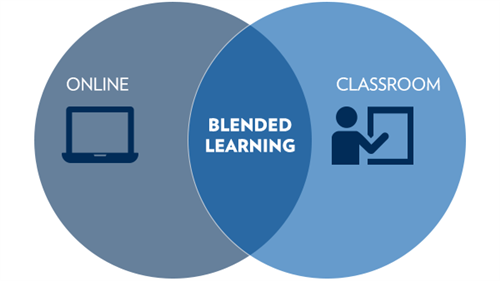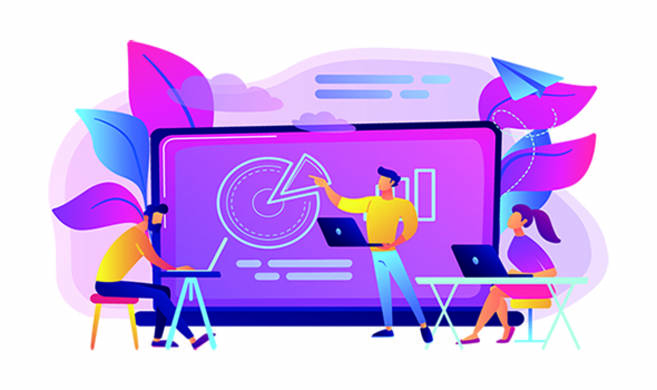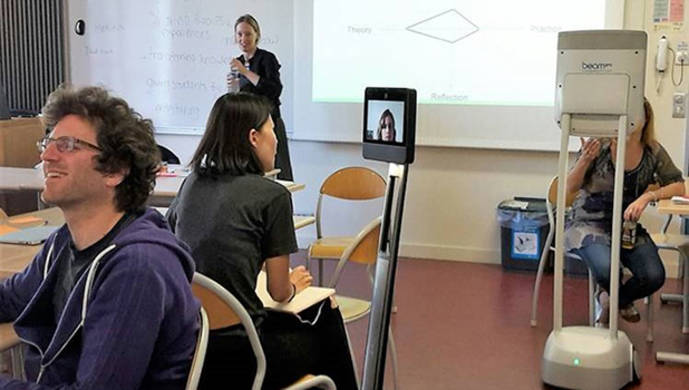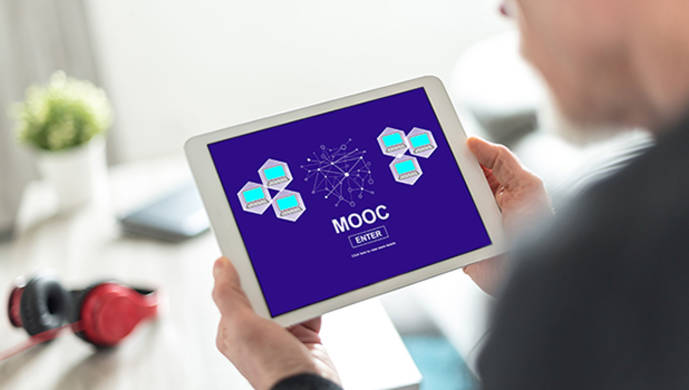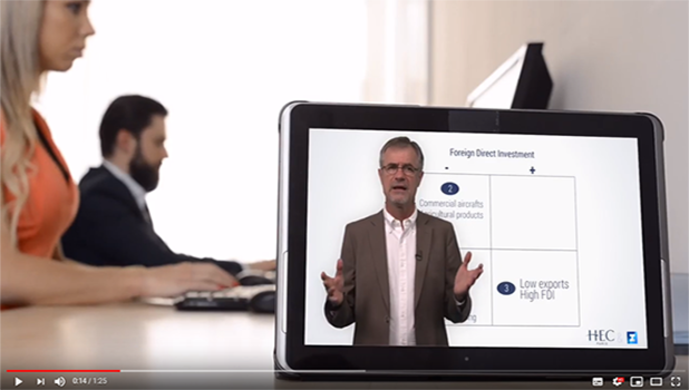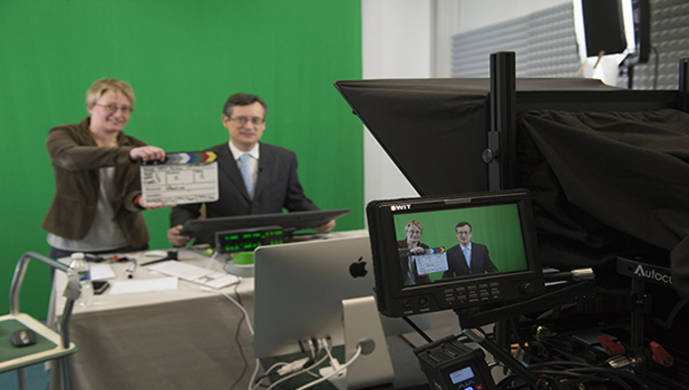Caroline Meriaux, Digital Learning team: Can you talk to me about your blended learning course in the Grande Ecole program?
Pascal Quiry: It’s a mandatory course in Corporate France, for Master 1 students. So far, this 36-hour course was spread into 24 sessions of 1h30 each, at the rate of two weekly sessions, one on Monday morning and one on Wednesday morning.
Having developed material (videos and quizzes) for the creation of online courses (ICCF@HEC, ACCF@HEC), I decided to reduce the face-to-face time by two and to offer the other half online. So Monday sessions are now replaced by distance learning whereas Wednesday sessions remain face-to-face. Before coming to Wednesday session, students must have studied the online material and done the related quizzes. This format allows to make more applied activities in classroom.
I decided to reduce the face-to-face time by two and to offer the other half online.
Do other professors teaching in this course have adopted the same format?
Being the course coordinator, I first tested this new format in my course before deploying it in the other courses. Today, the online part is therefore the same for all groups whereas the face-to-face part is run by several professors.
On which platform is hosted the online course?
The course is hosted on First Finance’s platform, our partner with whom we have developed the Executive Online Certificates. They take care of technical support for students.
How do you make sure students do the online work?
The day before the face-to-face course, professors log in on the platform to verify if their students filled out the mandatory quiz and send a reminder to those who didn’t. Quizzes are there primarily there to make sure they watch the videos and to test their understanding. But we nevertheless need a "carrot" so that the work is done. Quizzes are thus graded and represent 20 % of the final grade.
What are the advantages of this new course format?
One of the first positive consequence is that course evaluations have increased for all professors! This new format has also allowed to standardize the course content and supporting material thanks to the online resources which are the same for all students. They can now learn at their own pace during the week and can post their questions on the discussion board if they need help.
This blended learning format also divides by two the classroom occupation and thus reduces significantly carbon emissions! We, the faculty, but also some students, only come to campus once a week instead of two.
The students can now learn at their own pace during the week and can post their questions on the discussion board if they need help.
What are the risks of such format?
Some students wait until the last moment to watch all the videos, generally just before the final exam. This is detrimental for them because we cannot do any formative assessment and check their understanding all along the course. Most of the time, they fail the exam as it is impossible to assimilate so much content in so little time, without putting things into perspective and with no maturation time.
Does monitoring the discussion forum take a lot of time?
Not that much because most students ask questions the day before the mid-term and the final exam. Furthermore, we have as a rule not to answer by email to questions related to the course content. Students must post their question in the discussion forum so that the whole promotion can see the question and the answer, and therefore they also learn this way. On our side, we avoid numerous individual emails for the same questions.
What would be your recommendations to your colleagues?
Don’t be afraid, it works ! Turning the material into a digital format is a huge investment at the beginning. However, this can be done with some help. We can then make it profitable and mutualize this investment during several years. To be really effective, the only condition, I think, is to have already given the course face-to-face. Because we know "where it sticks", we know the parts of the course where students have the most difficulties. We can thus take it into account in the conception of the online resources.
